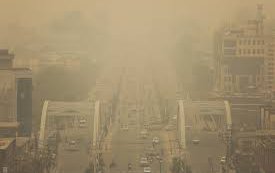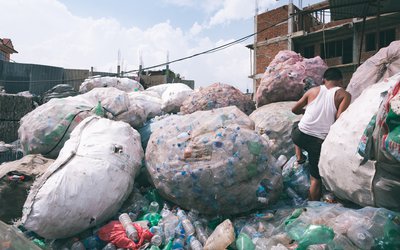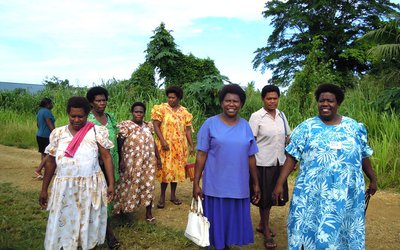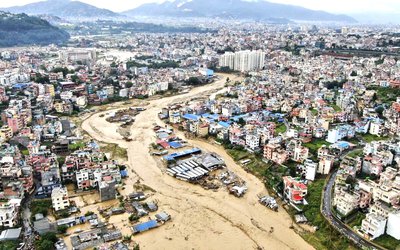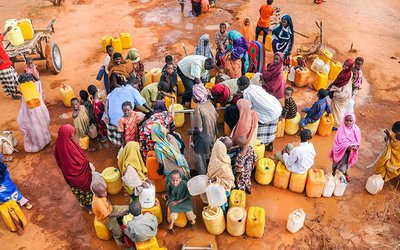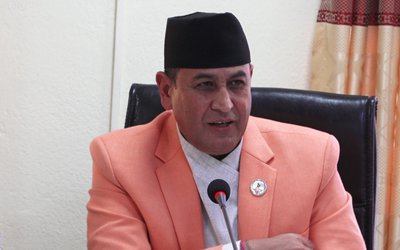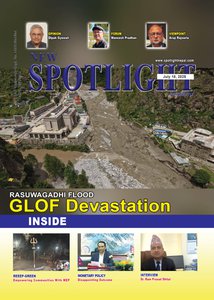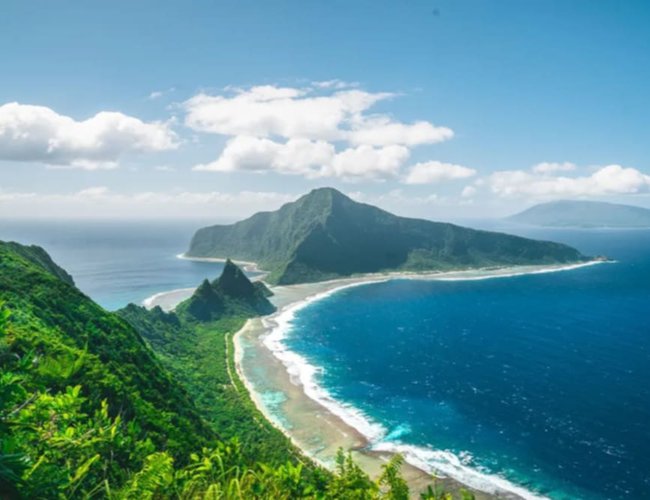
Rising Tides undermine Resilience in Polynesia's Fight against Climate Change
In the vast blue expanse of the Pacific, the Polynesian nations of the Cook Islands, Niue, Samoa, and Tokelau stand as some of the world’s most vulnerable frontlines in the battle against climate change. These islands, celebrated for their cultural richness and ecological beauty, are facing a stark new reality: seas are rising faster in the Pacific than almost anywhere else on Earth. While the global average sea-level rise is 3.4 mm per year, the western tropical Pacific endured the alarming rate of approximately 4.52 mm annually between 1993 and 2023. This relentless climb of the ocean has turned occasional coastal flooding into a recurrent crisis, a fact nowhere more evident than in the Cook Islands, where flood events surged from just five in 1980 to over 43 in 2024 (WMO, 2024).
But rising ocean levels are only part of the story. Extreme weather events—tropical cyclones, floods, droughts, and tsunamis—are growing in frequency and intensity. In 2010, for example, Cyclone Pat left deep scars across the Cook Islands, while in 2023 flooding in Samoa displaced communities and disrupted livelihoods in a country where annual disasters typically affect over 40% of the population and inflict economic losses that have reached a staggering 46% of GDP (World Bank, ADB, 2021). Niue, which is frequently struck by cyclones and tremors, sees average annual damages of $0.9 million (GFDRR, 2011), while Tokelau, though less often reported on, is equally exposed due to its precariously low elevation and heavy reliance on external lifelines.
Layered atop these climatic shocks are deeply entrenched structural vulnerabilities. Geographic remoteness impedes rapid response and hampers economic diversification, while antediluvian infrastructure and underfunded public systems limit resilience. Fragile data ecosystems and underdeveloped early warning systems (EWSs) mean that communities are often caught off guard. Compounding these challenges is the gradual erosion of traditional knowledge systems, which once formed the backbone of local adaptation and survival strategies. At the same time, over-dependence on international assistance, without commensurate investment in local capacity, continues to stall sustainable progress.
Navigating the Storm: The Challenges of Climate and Disaster Resilience in Polynesia
Geographic isolation and limited accessibility: Scattered like pearls across the vast Pacific, the Polynesian nations face a unique and daunting challenge—geographic isolation, a condition that deepens their exposure to climate threats. With communities separated by thousands of kilometers of ocean and transport and communication links limited, even the routine delivery of services becomes a logistical feat. Tokelau, which comprises three fragile atolls without an airport, depends solely on infrequently used sea routes, a fact which leaves the nation virtually cut off when storms strike. Niue, with its tiny population and remote location, struggles to bounce back from disasters. In 2004, for example, Cyclone Heta inflicted damages worth over five times its GDP (Colmer, 2016). The 2023 floods in Samoa laid bare the fact that having limited infrastructure can paralyze recovery, as blackouts are widespread and access to basic services is blocked. These stark realities indicate the urgent need for investment in resilient infrastructure and emergency systems. When the waves rise, distance becomes more than just a measure of space; it becomes a matter of survival.
Inadequate climate- and disaster-resilient infrastructure: Across Polynesia, the foundations of daily life—ports, roads, schools, and water systems—are being tested by a climate growing more volatile each year. Built in an era before rising seas and intensifying storms were a reality, much of the region’s infrastructure is no match for today’s realities. In Samoa, for instance, the 2023 floods overwhelmed systems in Savaii, revealing how quickly critical services can falter. Tokelau, which depends on fragile rainwater tanks, faces a mounting risk with each prolonged drought. Even in the Cook Islands, where innovations like GIS mapping have strengthened disaster readiness, the infrastructure as a whole still lags behind the pace of climate change. Isolated, underfunded, and increasingly exposed, island nations in the Pacific stand at a crossroads where resilient, future-ready infrastructure is no longer optional but essential for survival.
Limited financial and technical resources: Across the scattered islands of Polynesia, the ambition to build climate resilience often runs aground not for lack of will but for lack of means. Financial and technical constraints remain some of the most formidable barriers to development. Complex international climate finance systems demand expertise and capacity that many of these small nations are still building. In the Cook Islands, for instance, heavy reliance on loans rather than grants risks deepening fiscal strain, particularly in its fragile post-pandemic economy. Samoa’s planning efforts are stymied by insufficient climate data, while Niue’s push toward renewables is slowed by limited funds and skilled personnel. Tokelau, remote and tiny, struggles to even get a seat at the global table. These gaps—small but critical—make it harder for island states to implement the very solutions that could safeguard their futures from the potential ravages of a rapidly changing climate.
Erosion of traditional knowledge and adaptive practices: Across Polynesia, centuries of wisdom once woven into daily life are quietly slipping away taking with them powerful tools for climate resilience. The steady erosion of traditional knowledge and adaptive practices, driven by colonization, globalization, and the march of modernization, has frayed the cultural fabric that once helped communities thrive despite nature’s extremes. In Samoa, for instance, cyclone-resistant thatched homes and climate-smart farming methods are being replaced by less resilient modern alternatives. In Tokelau, the practice of the communal fishing system “inati” and indigenous weather forecasting is fading, thereby weakening local preparedness. Niue, too, has seen a decline in customary marine stewardship, leading to ecosystem strain. This loss is more than symbolic; it strips communities of tested strategies finely tuned to island environments. Rekindling these ancestral practices—and blending them with modern science—offers not only a pathway to resilience but a revival of cultural identity and pride in Polynesian ingenuity.
Weak data and inadequate EWSs: In the vast, isolated stretches of the Pacific, weak data and inadequate EWSs pose a significant challenge to Polynesian nations, hindering their ability to respond swiftly and effectively to climate-induced disasters. Pacific island nations are impeded in their efforts to strengthen resilience by antiquated meteorological infrastructure and fragmented communication networks that limit their forecasting capabilities. Samoa, for example, has deployed ocean observation buoys in Apia Harbour to boost EWSs, but its vast gaps in data coverage mean that some regions are till unprotected. Niue, though it has actively integrated traditional knowledge into its EWSs, is handicapped by its remote location and limited technical capacity. The Cook Islands are making strides with its “Early Action Rainfall Watch” to monitor rainfall and predict droughts or floods, yet the full potential of this initiative has yet to be realized. Tokelau’s vulnerability is particularly stark: its low-lying atolls are exposed to the full force of climate impacts as there is minimal protective infrastructure. Together, these challenges create a vicious cycle of delayed warnings, unprepared communities, and a growing vulnerability to the escalating dangers of the changing climate.
Dependency on external aid and limited local capacity: In the far-flung reaches of the Pacific, dependency on external aid and the limited capacity of local institutions create a precarious foundation for Polynesian nations in their battle against climate change and natural disasters. While these nations are striving to build resilience, they often find themselves constrained by financial limitations and limited expertise. Samoa, for example, faces a staggering annual funding gap of US$250 million, or 6% of its GDP, to meet its climate adaptation needs between 2022 and 2026 (IMF, 2022). This gap highlights a critical vulnerability: without substantial donor support, the efforts of the Samoan government are severely hampered. In Niue, where the economy relies heavily on aid from New Zealand to fund basic government functions, the government’s financial autonomy is extremely limited. Although the Cook Islands are classified as a high-income country, the nation’s 15 islands are highly exposed to climate shocks. Today, official development finance contribute only a tiny fraction of its GDP, far less than the high of 16% in 2015 (Pacific Aid Map, 2022). Meanwhile, Tokelau, with its small population and isolated location, faces multiple challenges. It relies entirely on external assistance for disaster response and does not have the infrastructure it needs to weather the escalating impacts of climate change. Together, these circumstances underline the urgent need for strengthening local capacities, fostering self-sufficiency, and securing sustainable, long-term funding to protect Pacific island nations from the intensifying forces of nature.
Polynesia’s Path to Sustainability: Navigating Policies and Challenges
Polynesian nations have long been dedicated to safeguarding their unique ecosystems and biodiversity; indeed, they have crafted a number of national policies, strategies, and plans that reflect this commitment. The Cook Islands, for example, has developed a comprehensive framework that includes the National Biodiversity Strategy and Action Plan (NBSAP), the National Invasive Species Strategy and Action Plan, and the National Environment Policy (2022). These efforts are bolstered by initiatives like the Takitumu Conservation Area and the State of the Environment report, which provide essential insights into the health of the environment. Niue, too, stands as a beacon of conservation, with its own NBSAP (2015) and Environment Act (2003). In addition, Samoa’s establishment of the Niue Nukutuluea Multiple-Use Marine Park in 2022 enhanced the protection of its marine ecosystems. Samoa made great ambitious strides in marine governance by adopting the Samoa Ocean Strategy (2020–2030) and the Samoa Marine Spatial Plan (2024–2034), setting goals for the full protection of 30% of its ocean areas, and embracing 100% sustainable management (Samoa Marine Spatial Plan, 2024–2034). Tokelau, too, has an NBSAP and National Environment Policy, both of which commit it to conservation and sustainable development in its unique context. These efforts across Polynesia demonstrate a cohesive and powerful response to environmental threats and are designed to build resilience while safeguarding precious natural heritages.
In the energy sector, too, Polynesian nations are pioneering a shift toward sustainability. The Cook Islands have outlined an ambitious goal to achieve 100% renewable electricity through the Cook Islands Renewable Energy Chart (CIREC), which is in turn supported by detailed phased implementation plans and the CIREC Implementation Plan. The Te Aponga Uira Act and the National Infrastructure Investment Plan (2021–2030) further reinforce this commitment. Niue, with its goal of achieving 80% solar electricity by 2025, is guided by the Niue National Energy Policy (2005) and the Niue Strategic Energy Road Map (2015–2025). Samoa’s energy strategies, outlined in the Samoa Energy Sector Plans (2017-2022), prioritize sustainability, energy security, and the integration of renewable energy projects through policies such as the Feed-in Tariff Policy (2010). Tokelau, to meet its goal of 100% renewable energy, made significant strides with the adoption of its National Energy Policy (2007) and Tokelau Renewable Energy Project (2012). Together, these nations are not just planning for renewable energy; they are actively shaping the future of energy security in the Pacific. They are reducing their dependence on fossil fuels while ensuring a sustainable energy future.
To reduce the impacts of climate and disaster risk, the Cook Islands have crafted several robust plans, such as the National Disaster Risk Management Plan (2017) and the Second Joint National Action Plan (JNAP II) for Climate Change and Disaster Risk Management (2016–2020), a well an island-specific plans and a Tourism Crisis Management Plan (2019) to address sector-specific challenges. The Climate Change Country Program (2018–2030) ensures the integration of climate resilience into development and the mobilization of necessary climate finance. Niue’s disaster management framework includes the Niue National Disaster Plan (2010), the Joint National Action Plan (2012), and the National Climate Change Policy (2010), which together guides both disaster preparedness and climate resilience efforts. Samoa’s disaster resilience is reinforced by multiple strategies such as the National Disaster Management Plan (2017–2020), the National Action Plan for Disaster Risk Management (2017–2021), and the National Climate Change Policy (2020–2030), all of which contribute to sustainable development and climate impact mitigation. Tokelau’s National Disaster Management Plan (2019) ensures that the island is equipped to respond effectively to disasters. Collectively, these frameworks have created a solid foundation for managing disaster risks and enhancing climate resilience across Polynesia.
While these frameworks are promisingly comprehensive, several challenges remain in translating them into actionable outcomes. Limited financial and technical capacity, particularly in small nations like Tokelau and Niue, hampers the full realization of these ambitious goals. Institutional coordination is often limited, and overlapping mandates impede the timeliness of decision-making and reduce the effectiveness of implementation. Accessing climate finance is another significant hurdle especially as the complexity of funding requirements and the limited in-country expertise in proposal development create barriers to securing vital resources. Moreover, reliance on external technical assistance sometimes leads to misalignment with local priorities, while gaps in local data and monitoring systems impede adaptive management and evidence-based policymaking. These barriers delay progress from planning to tangible, on-the-ground impact. There is a need for greater local capacity, better coordination, and more effective access to financial resources to fully realize the potential of these vital strategies.
UNDP’s Commitment: Empowering the Pacific for Climate Resilience
UN agencies, spearheaded by UNDP, have consistently led efforts to combat the profound impacts of disasters and climate change in the Pacific region, particularly in vulnerable nations. Through transformative initiatives like the Pacific Resilience Partnership and the Joint Pacific Climate Change Adaptation Program (2012), UNDP has supported countries in crafting long-term strategies for climate resilience. In the Cook Islands, UNDP has been instrumental in embedding climate adaptation into national policies, notably through the Cook Islands National Adaptation Program of Action (2005), which emphasizes strengthening infrastructure and expanding disaster preparedness so that the nation can better withstand future climate shocks.
In Samoa, UNDP’s Community-based Climate Change Adaptation Project (2008-2012) made significant strides in helping local communities respond to climate impacts such as flooding and drought. By enhancing water management systems and promoting climate-resilient agricultural practices, the initiative equipped communities to safeguard their livelihoods and futures. UNDP’s influence extends even further, particularly in strengthening national disaster risk management frameworks and fostering collaboration among stakeholders in disaster-prone countries. In Tokelau, a small, remote atoll, UNDP has focused on climate change adaptation planning and bolstering disaster risk governance, two areas crucial for a community with limited resources and infrastructure. In Niue, through GEF-funded projects, UNDP supported the transition to renewable energy sources and improved waste management, reducing the island’s vulnerability to climate-induced disasters. Moreover, UNDP’s EWS initiative was a key in enhancing Samoa’s meteorological infrastructure, allowing for more effective preparation and timely response to extreme weather events. These multifaceted efforts by UNDP reflect a commitment to delivering locally owned, sustainable solutions that empower Pacific nations to face the growing challenges posed by climate change and natural disasters.
The Future Outlook
To minimize potential gaps in policies and practices, it is crucial to design and implement targeted actions across short-, medium-, and long-term timelines. In the short term (1–2 years), strengthening EWSs and local data networks must be prioritized to enhance resilience across Tokelau, Niue, the Cook Islands, and Samoa. By investing in decentralized meteorological stations, ocean buoys, and community-based alert systems, these nations can vastly improve hazard forecasting and local-level disaster preparedness at the local level. Complementing these investments, establishing real-time hazard mapping and regional data-sharing platforms will close the critical gaps currently hindering timely responses. At the same time, revitalizing and integrating traditional knowledge into disaster risk reduction strategies offers a culturally rooted and sustainable approach. Supporting community-driven initiatives, including documenting Indigenous practices such as Tokelau’s “inati” fisheries and Samoa’s cyclone-resistant housing techniques, will preserve invaluable wisdom. Facilitating intergenerational knowledge exchange between elders and youths will further ensure the continuity of these adaptive practices.
In the medium term (3–5 years), scaling up nature-based solutions for coastal and watershed protection must be a central focus. Ecosystem-based adaptation strategies such as the replantation of mangrove forests, restoration of coral reefs, and creation of agroforestry buffers will reduce vulnerability to flooding and erosion, thereby improving both ecological and disaster resilience. These actions should be seamlessly integrated with NBSAPs and marine spatial plans to ensure the efforts in conservation and resilience-building are cohesive. Equally important is upgrading climate-resilient and renewable energy infrastructure. Expanding solar microgrids with battery storage and integrating wind hybrid systems will ensure energy access in remote atolls and outer islands. These solutions should be paired with resilient water infrastructure, such as solar-powered desalination systems, to address water scarcity in drought-prone areas like Tokelau.
Looking ahead to the long term (6–7 years), establishing regional financing mechanisms dedicated to climate and disaster resilience will be essential. A Polynesia-specific climate fund or pooled insurance scheme could reduce dependency on fragmented and irregular aid flows and provide more direct access to climate finance. Strengthening the technical and institutional capacity of national governments to meet the requirements of global funding sources such as the Green Climate Fund (GCF) and the Global Environment Facility (GEF) will be crucial. Strengthening could be achieved through regional technical assistance hubs embedded within existing institutions, helping countries navigate complex financing mechanisms. Institutionalizing climate-resilient land and ocean governance must be a strategic priority as well. Such institutionalization includes embedding integrated land-sea planning into national development frameworks, establishing enforceable marine protected areas, and adopting climate-smart zoning regulations. Strengthening governance of the blue economy and carbon markets will require transparent systems, sound ecosystem valuation, and inclusive policymaking that bring all sectors of society to the table. These comprehensive actions, woven together over the short-, medium-, and long-terms, offer a path forward for building a resilient and sustainable Polynesia, one that is prepared to face the challenges of a rapidly changing climate.
Dr. Dhruba Gautam is an “Independent Evaluator and Consultant” with deep expertise in energy, natural resource management, climate resilience, and disaster risk reduction and sustainable livelihoods across the Asia-Pacific and Caribbean. His insights in this article draw on decades of hands-on and strategic evaluations of NRM projects in diverse island and coastal contexts. For collaboration or inquiries, reach him at drrgautam@gmail.com
- Confronting Climate Extremes And Environmental Crises In Central Asia: Urgent Action To Strengthen Resilience, Resource Sustainability, And Regional Cooperation
- Jun 03, 2025
- Beyond The Storm-Women, Climate, And The Power of Inclusion: Unlocking Stronger Climate Strategies through Gender-Responsive Action in the Pacific and Caribbean
- May 27, 2025
- Sustaining Nature; Sustaining Culture: The Anthropology Of Resource Management In The Pacific And Caribbean
- May 09, 2025
- Buried Dangers, Lasting Impact: How Landmines Erode Peace, Stifle Recovery, And Endanger Communities' Wellbeing
- May 04, 2025
- East Asia’s Environmental Evolution: Transforming Climate Challenges Into Drivers Of Ecological Progress And A Resilient Future
- May 02, 2025

